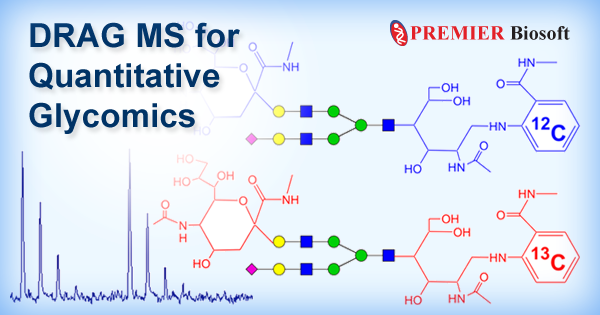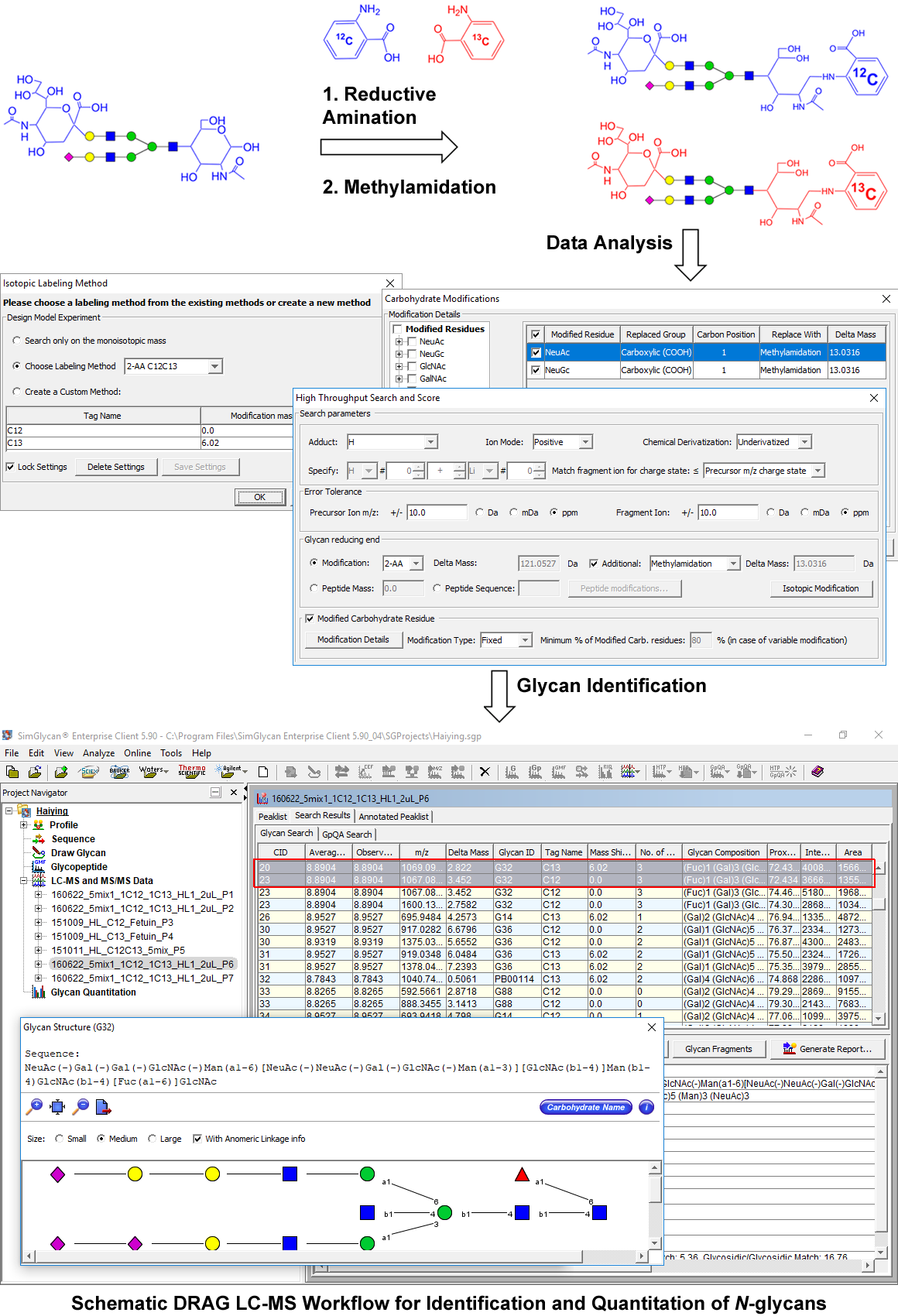Orbitrap-based DRAG Analysis – A Multiplex Workflow for Quantitative Glycomics

May 25, 2021
Sialylation is an important biological modification that is involved in many cellular processes. Sialylated N-glycans appear to have crucial roles in the immune system, pathogen recognition and cancer. For understanding the therapeutic importance of sialylation, a direct comparison between the neutral and sialylated N-glycans is required. However, the differences in their (neutral and sialylated N-glycans) ionization efficiency was the major bottleneck. With the recent advances, a new multiplex quantitative strategy, Dual Reactions for Analytical Glycomics (DRAG) in conjunction with mass spectrometry (MS) has overcome these MS based glycomics challenges. The DRAG-MS method helps to quantify both neutral and sialylated glycans by stable isotope labeling and methylamidation of the sialic acid residues. Providing informatics support to this innovative quantitation technique, SimGlycan software incorporates the Orbitrap-based DRAG analysis module.
The N-glycans from a mixture of five glycoproteins were released using PNGase F. Two equivalent N-glycan aliquots were respectively labeled with a pair of ‘’light’’ and ‘’heavy’’ 2-AA reagents, which were then mixed together and purified. An LC-coupled Thermo Q Exactive mass spectrometer was used for performing the analysis.
The raw data from the LC-MS experiment was analyzed in SimGlycan software for peak detection, molecular feature finding, the association of MS/MS data to LC-compounds, and assigning correct precursor m/z values. A custom database containing 65 curated compositional structures from five standard glycoproteins mixtures was created using SimGlycan server. A custom MS/MS database search template was created incorporating two biological groups - “Light” and “Heavy” denoting the samples isotopically labeled with 2-AA12[C6] and 2-AA13[C6] respectively. The MS/MS database search was performed using 10 ppm mass tolerance for both precursor and product ions. A total of 227 LC compounds were identified with accurate compositional structures. These identified glycans were separated into two groups based on their labeling (light & heavy) reagent and their area under the curve was used as a measure for quantitation. For more details about this workflow, please click here.

| Comment | Share |
|


